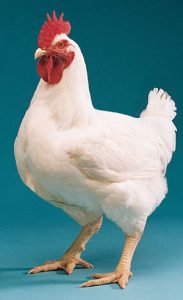
Introduction:
Poultry farming has gained significant popularity over the years, and for good reason. Whether you’re a small-scale farmer or an aspiring entrepreneur, poultry farming offers a rewarding and profitable venture. In this comprehensive blog, we will delve into the world of poultry farming, covering everything from setting up your farm to maximizing productivity and ensuring the welfare of your birds. So, let’s dive right in and explore the key aspects of poultry farming!
Understanding Poultry Farming:
Definition of poultry farming and its various types (chicken, ducks, turkeys, etc.).
Advantages and potential challenges of poultry farming.
Market demand and profitability analysis.
Planning Your Poultry Farm:
Identifying the suitable location for your farm.
Selecting the appropriate poultry housing systems (cages, free-range, barns, etc.).
Estimating the required investment and developing a business plan.
Obtaining necessary permits and licenses.
Choosing the Right Breeds:
Overview of different poultry breeds and their characteristics.
Factors to consider when selecting breeds (egg production, meat production, dual-purpose, etc.).
Evaluating breed health, disease resistance, and adaptability to local conditions.
Poultry Housing and Equipment:
Designing and constructing poultry houses.
Understanding the importance of proper ventilation, lighting, and temperature control.
Choosing appropriate feeding and watering systems.
Implementing biosecurity measures to prevent disease outbreaks.
Feeding and Nutrition:
Understanding the nutritional requirements of poultry at different stages (chicks, growers, layers, broilers).
Types of poultry feed and their composition.
Formulating a balanced diet and providing supplements.
Tips for efficient feeding management.
Poultry Health Management:
Recognizing common poultry diseases and their prevention.
Vaccination schedules and disease control strategies.
Regular health checks and early disease detection.
Proper waste management and biosecurity practices.
Poultry Breeding and Hatchery Management:
Overview of natural and artificial poultry breeding methods.
Managing the incubation process.
Brooding and chick management techniques.
Record-keeping for breeding and hatchery operations.
Marketing and Sales:
Developing effective marketing strategies.
Identifying target markets and customer segments.
Branding your poultry products.
Establishing distribution channels and partnerships.
Maximizing Profitability and Sustainability:
Cost optimization techniques.
Scaling up your poultry farm operations.
Exploring value-added products (organic, free-range, specialty eggs).
Implementing sustainable and ethical farming practices.
Resources and Support:
Relevant government agencies and industry associations.
Online resources, courses, and workshops.
Networking opportunities and connecting with other poultry farmers.
Continuous learning and staying updated with industry trends.
Conclusion:
Poultry farming can be a lucrative and fulfilling venture when approached with the right knowledge and strategies. By understanding the fundamentals, implementing best practices, and staying attuned to market demands, you can establish a successful poultry farm. Remember to prioritize the health and welfare of your birds, as it is crucial for sustainable and ethical farming practices. With dedication, hard work, and continuous learning, you can achieve your goals in the poultry farming industry. Good luck on your poultry farming journey!




1 Comment